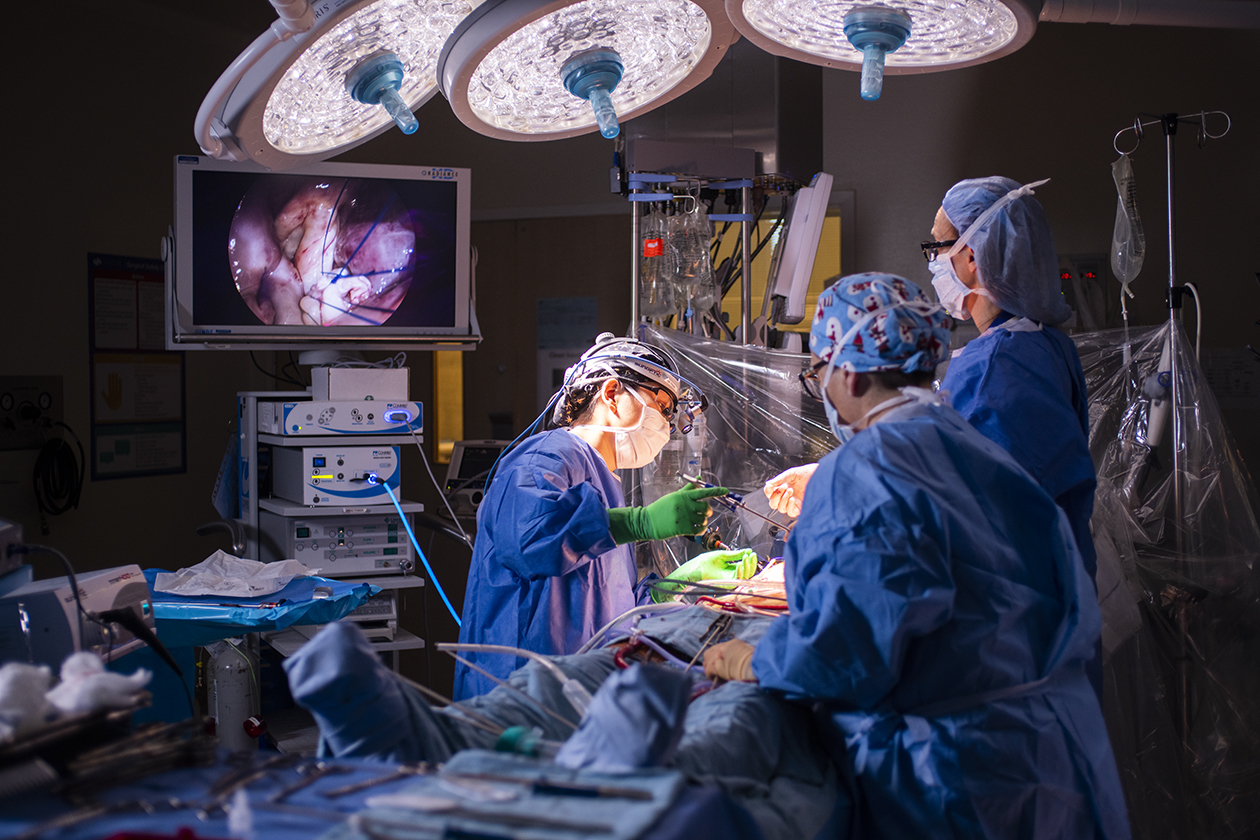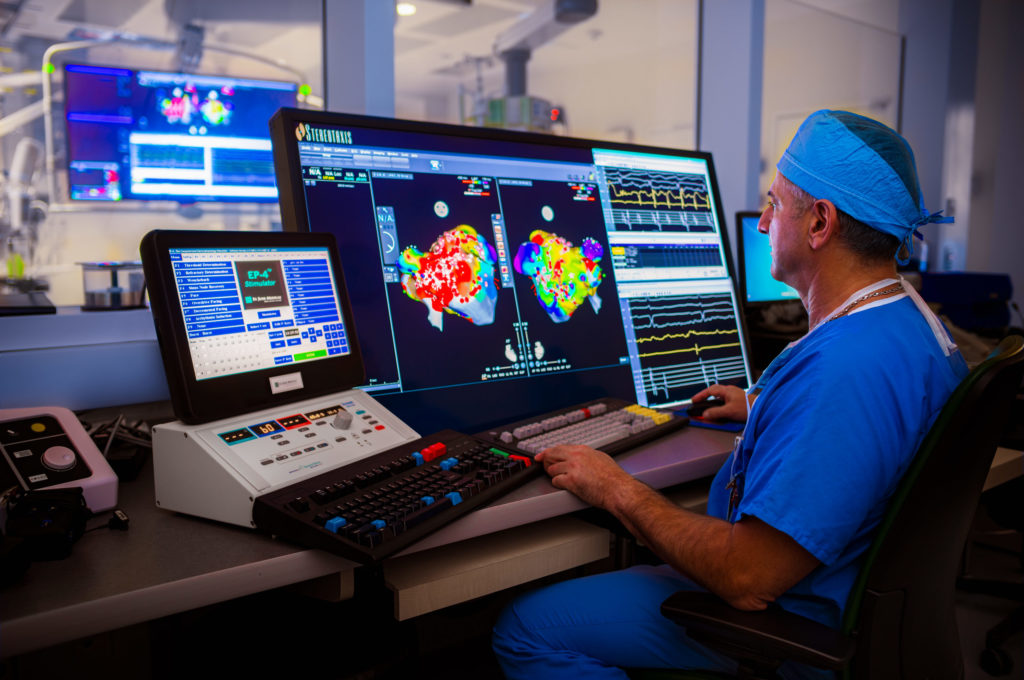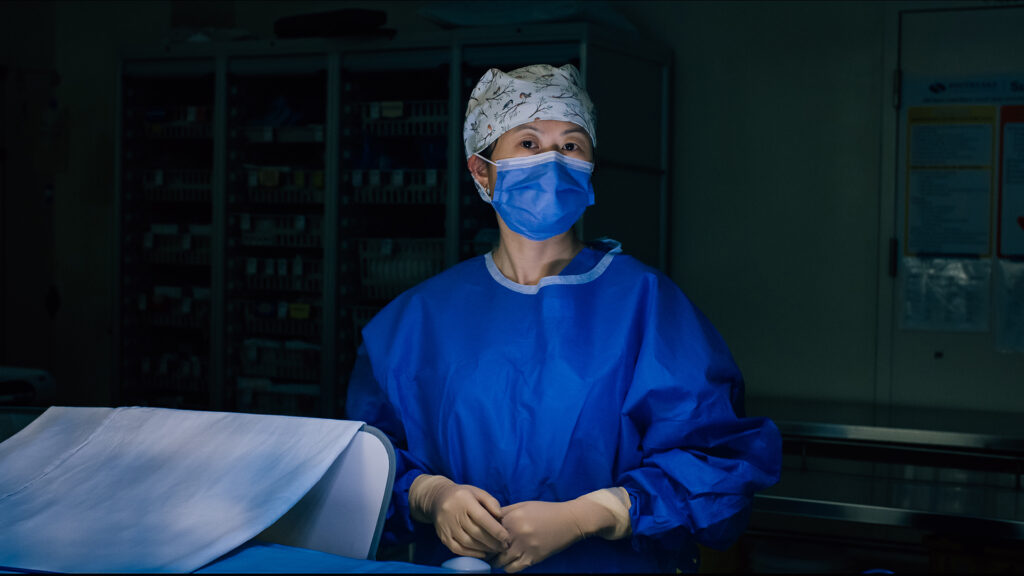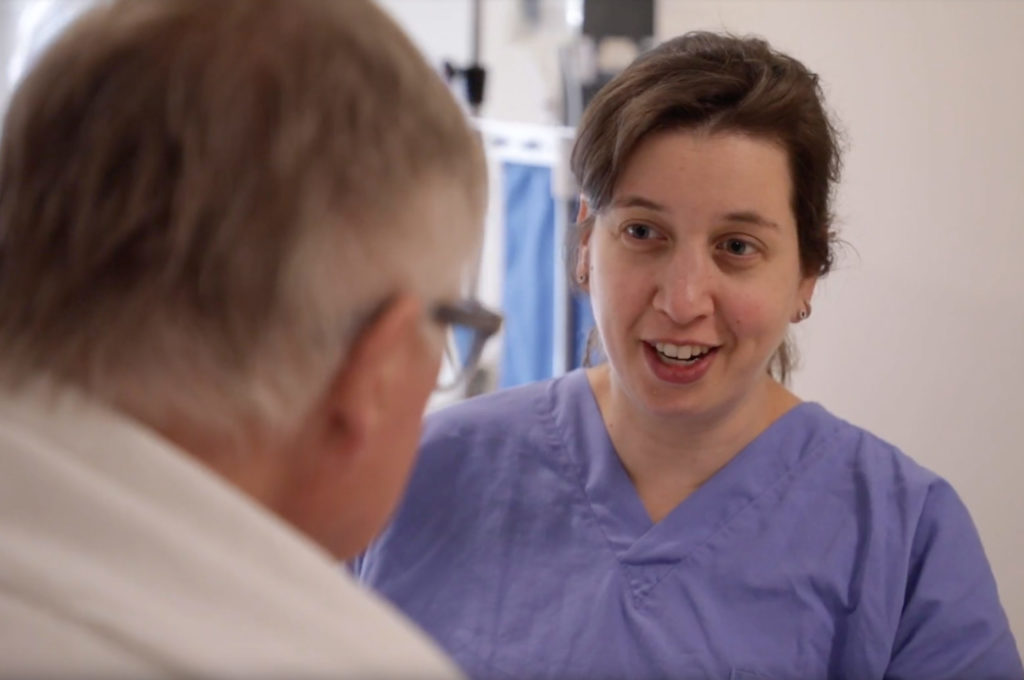Story
Frequently Asked Questions
How is coronary artery disease (heart disease) diagnosed and treated?
How is coronary artery disease (heart disease) diagnosed and treated?
Seeing your healthcare provider is essential for regular physical appointments to promote healthy styles that manage your cardiac risk factors before symptoms occur. If coronary artery disease is suspected, you will be referred for cardiac testing. Once diagnosed, a referral will be made to see a cardiologist.
How is heart disease different than a heart attack?
How is heart disease different than a heart attack?
A heart attack is a blockage in one of the arteries that feed your heart muscle with blood rich in oxygen. Over time or due to risk factors, these arteries become narrow and finally block. This means the part of the heart muscle not receiving oxygenated blood may risk permanent damage or loss of pumping action.
If you suspect you are having symptoms of a heart attack, CALL 911. Do not drive yourself to the hospital.
I am claustrophobic. Tell me more about the camera pictures?
I am claustrophobic. Tell me more about the camera pictures?
We understand this type of test can be stressful. Please let the care workers know you have this fear when you arrive. Please know, you will not be entirely enclosed in the machine and it will not touch you.
I have to wear a Holter monitor. What should I know and are there side effects?
I have to wear a Holter monitor. What should I know and are there side effects?
Most importantly, it is important to never get the monitor wet. As for showering, ask your care provider what conditions are practiced for your individual monitoring period. There are no side effects or symptoms produced from wearing your heart monitor.
I really love to exercise. Will this make my heart stronger?
I really love to exercise. Will this make my heart stronger?
Yes, exercise has huge benefits by reducing blood pressure and manufacturing good cholesterol. This will improve the effectiveness of your blood vessels in the heart and in the rest of the body.
I understand that I will not be able to eat certain foods anymore, but how should I change my diet?
I understand that I will not be able to eat certain foods anymore, but how should I change my diet?
Our nutritionists will provide information on a diet when you come into the program. Below are areas you can focus on now. If this is too overwhelming, choose one that is important to you.
- Increase your fibre intake: Eat more wholegrain bread, cereals, pasta, and rice, and eat seven servings of fruit and vegetables per day.
- Increase your healthy fat intake: Eat unsaturated fats found in a handful of unsalted nuts, canola, or extra virgin olive oil. Eat two to three servings of fish per week.
- Cut your saturated fat intake: Choose low-fat dairy products and lean meats. Eliminate trans fat in your diet.
- Limit your salt intake: Consume one teaspoon (5 grams) or less per day. Limit most processed foods and the use of condiments such as ketchup and soy sauce, which have added salt. Avoid adding salt to food altogether.
- Read all food labels: Read the “nutrition facts” labels on food. Pay attention to sodium and fat content.
- Watch your portion size: If you need to lose weight, reduce your portions, learn about appropriate serving sizes, use a smaller plate, and avoid taking seconds.
I’m taking nitroglycerine spray. If I am experiencing symptoms of angina, do I still take it?
I’m taking nitroglycerine spray. If I am experiencing symptoms of angina, do I still take it?
Yes. If you are using nitroglycerine, take it immediately (sit down when you are using it). Repeat in five minutes if symptoms persist. If needed, you may take a third spray in another five minutes.
If your symptoms do not resolve, call 911. DO NOT DRIVE YOURSELF TO THE HOSPITAL.
Rehab: Am I able to enjoy a healthy sex life while in cardiac rehab?
Rehab: Am I able to enjoy a healthy sex life while in cardiac rehab?
Yes, sexual activity may resume when you feel well and can climb two flights of stairs without shortness of breath or angina.
Rehab: Can I be a part of planning the exercises for my cardiac rehab?
Rehab: Can I be a part of planning the exercises for my cardiac rehab?
Absolutely. A regular exercise plan with preferred days and times will be worked out with your care providers. A typical weekly exercise class starts with a 30-minute education session, then followed by 60 minutes of exercise. You will be responsible to record your home exercise on the provided weekly exercise logs for review with your exercise therapist.
Rehab: I have been asked to work with Southlake’s Cardiovascular Prevention and Rehabilitation Program. What does this involve?
Rehab: I have been asked to work with Southlake’s Cardiovascular Prevention and Rehabilitation Program. What does this involve?
The Cardiovascular Rehabilitation Clinic offers personalized exercise programs to assist individuals with cardiovascular diseases, such as heart disease, stroke and those who are at high risk of cardiovascular disease to develop healthier lifestyles. Healthy practice that can reduce the risk of having a heart attack or stroke in the future.
Southlake follows the Cardiac Care Network of Ontario Standards for the Provision of Cardiovascular Rehabilitation
Rehab: I hear I will also be exercising during the cardiac rehab program. What does this mean?
Rehab: I hear I will also be exercising during the cardiac rehab program. What does this mean?
Our rehabilitation program includes weekly exercise sessions for six months. You will be assigned to an exercise therapist who will work with you throughout the program.
Rehab: What activities can I safely participate in before starting the cardiac rehab program?
Rehab: What activities can I safely participate in before starting the cardiac rehab program?
If you have had cardiac surgery, follow the guidelines in your surgery discharge package. Start out with walking short distances (5-10 minutes) several times per day. Then gradually increase the amount of time you are walking to 30 consecutive minutes. Follow the talk test rule: You should be able to talk while you walk without feeling out of breath.
If you feel symptoms such as chest pain or chest discomfort or shortness of breath, slow down and stop.
Do not lift anything heavier than 10 pounds (equal to a 4L bag of milk).
Rehab: Why is participating in the cardiac rehab program so important?
Rehab: Why is participating in the cardiac rehab program so important?
Cardiovascular rehabilitation adds to and builds on the treatments you received while in hospital. As a chronic condition, cardiovascular disease requires a lifelong behavioural change. You will finish the program with the tools and confidence to continue making healthy choices on your own.
Stress Test: Can I eat breakfast before my Stress Test?
Stress Test: Can I eat breakfast before my Stress Test?
Yes, a light breakfast is allowed with all types of Stress Tests (Nuclear, Stress Echo and regular Stress Tests). There is a caffeine restriction for 24 hours only with a Nuclear Stress Test.
Stress Test: I am having a Nuclear Stress Test. How long will it take?
Stress Test: I am having a Nuclear Stress Test. How long will it take?
It will take an average of five hours for completion of this test.
Stress Test: I have difficulty moving around. How can I walk on the treadmill for a Stress Test?
Stress Test: I have difficulty moving around. How can I walk on the treadmill for a Stress Test?
There are different ways of doing a Stress Test. If ordered by a physician, we can chemically stress the heart (e.g. Dobutamine/Persantine).
Stress Test: What should I wear to a Stress Test?
Stress Test: What should I wear to a Stress Test?
Comfortable clothes and shoes, preferably running shoes. You will be asked to remove all clothing from the waist up, so please come dressed in a shirt and pants.
Stress Test: Will I be getting a needle (i.e. intravenous) with a Stress Test?
Stress Test: Will I be getting a needle (i.e. intravenous) with a Stress Test?
With a regular Stress Test, no needle is involved. With a Nuclear Stress Test, you will be receiving an intravenous.
What are some of the typical symptoms of heart disease?
What are some of the typical symptoms of heart disease?
Someone with heart disease will develop symptoms such as, but not limited, to chest pain and/or tightness, or pressure that occurs during both an activity and rest periods. Other symptoms may include shortness of breath, nausea, vomiting, breaking out in a sweat, palpitations or dizziness. Getting to Emergency is important so treatment can be started immediately.
If you suspect you are having symptoms of a heart attack, CALL 911. Do not drive yourself to the hospital.
What are the risk factors for developing heart disease?
What are the risk factors for developing heart disease?
There are many health factors that contribute to developing heart disease. Genetics, elevated cholesterol levels and hypertension are only a few that play a role in diagnosis. Talk to your physician about not only identifying risk factors but ways you can lessen the effects of heart disease.
What do I do if I have angina?
What do I do if I have angina?
If you feel angina during activity, slow down and gradually stop over a couple of minutes.
What do I do if I have stroke symptoms?
What do I do if I have stroke symptoms?
Always follow the Heart and Stroke Foundation of Canada’s FAST assessment.
What do I need to know about cardiac catheterization?
What do I need to know about cardiac catheterization?
Freezing is injected into one side of the patient’s groin area. The patient may feel some pressure in this area as the doctor finds the artery and makes a small incision. Once the incision is made, a sheath is inserted into the artery and acts as a guideline or tunnel for the catheter to follow to the heart. The patient will not feel the catheter as it moves through their artery and into their heart.
During this time, the patient may be asked to take a deep breath and hold it while a series of x-rays are taken and recorded onto film.
The patient will then be transferred to a stretcher and taken to the recovery area for approximately three to four hours for close observation and routine care.
The cardiologist will briefly review the results with the patient immediately following the test.
What is an angiogram? (Cardiac Catheterization)
What is an angiogram? (Cardiac Catheterization)
An angiogram is a complex procedure that allows a cardiologist (a heart physician) to guide a thin plastic tube called a catheter into the arteries of the heart muscle to determine if there is any narrowing or blockage.
What is angina?
What is angina?
Angina is pain or discomfort that occurs when the heart does not receive adequate blood flow to maintain a constant flow of oxygen to the heart muscle. Angina may be experienced in the chest, neck, jaw, arms, shoulder or back.
What is aortic aneurysm repair?
What is aortic aneurysm repair?
The aorta may enlarge due to high blood pressure, abnormal aortic valves or genetic factors. If it reaches a certain diameter and depending on any associated heart problem, it may be recommended that the aorta be replaced with a graft. This may be done as scheduled surgery, and in addition to other procedures on the heart.
What is atrial or ventricular septal defect surgery?
What is atrial or ventricular septal defect surgery?
The wall of the heart that divides the left and right chambers; occasionally fails to close during development before birth, leaving an opening. This opening may increase the workload on the heart and needs to be surgically repaired.
What is congestive heart failure?
What is congestive heart failure?
Congestive heart failure is a condition where the heart does not pump normally. It does not mean that your heart is failing and going to stop. It just can’t cope with the normal flow of blood through the arteries and veins because the pumping or squeezing of the heart is reduced, and it becomes congested.
Typical symptoms include and are not limited to: feelings of fatigue and shortness of breath, due to the left side not working well. Or, developing swelling of lower limbs due to the right side not working well.
What is heart disease?
What is heart disease?
Coronary artery disease, or more commonly known as heart disease, is a disease of the blood vessels that feed the heart muscle. If they get clogged and narrow, this results in a reduction of oxygen-rich blood to the heart muscle. This results in angina (chest pain) — or in a more extreme example, a heart attack — if not treated immediately.
What support is available if I am not able to visit my loved one in person?
What support is available if I am not able to visit my loved one in person?
If you would like to arrange a virtual visit with your loved one please email the patient’s name and your contact information to VirtualVisit@southlake.ca.
Why are medications important? Why am I receiving additional prescriptions?
Why are medications important? Why am I receiving additional prescriptions?
While preparing for care, we asked you to bring in all your medications. Now as you are ready to go home, you may have additional prescriptions. We know this can be overwhelming, however, your medications are a key part in optimizing your health. If you have questions, please ask your care team.



